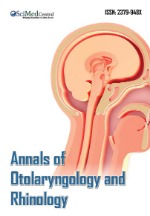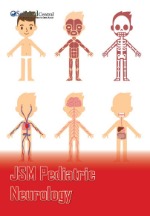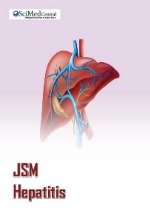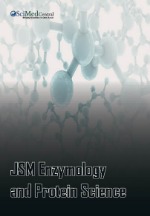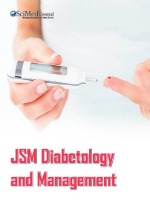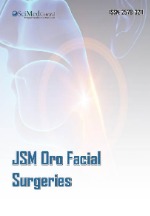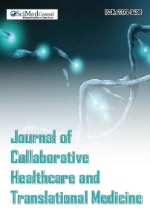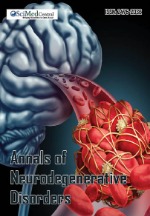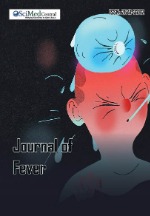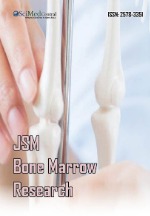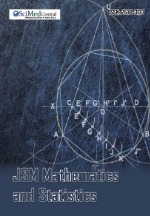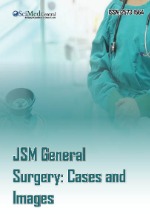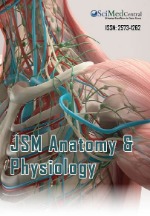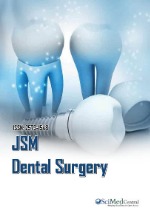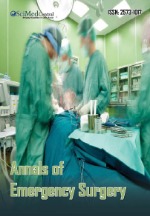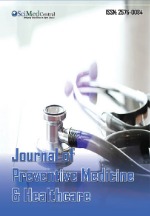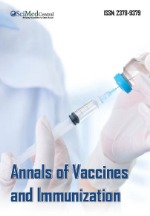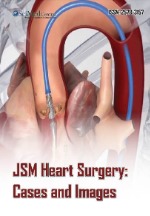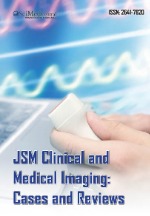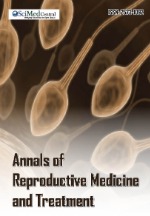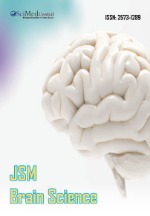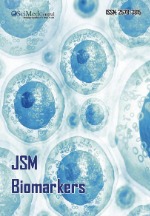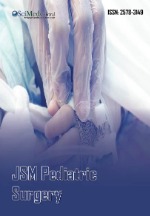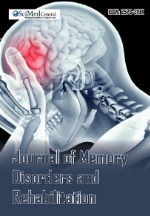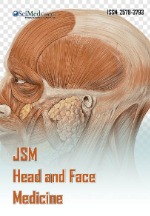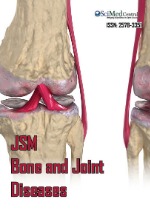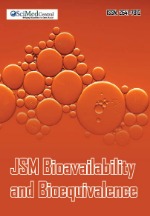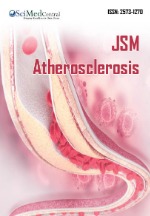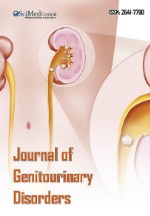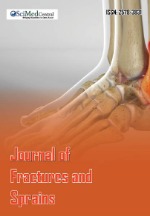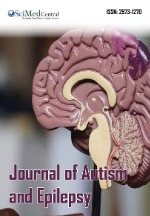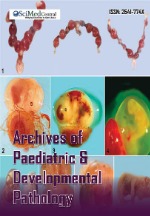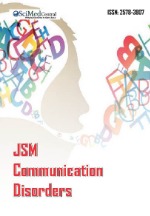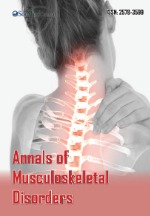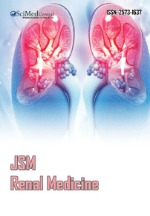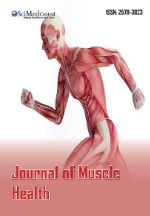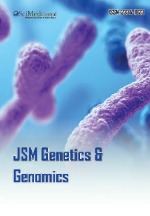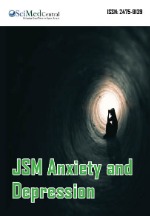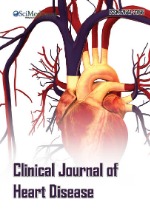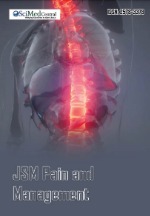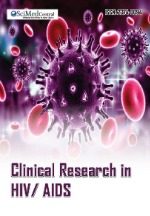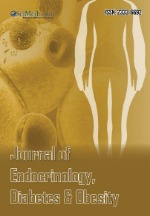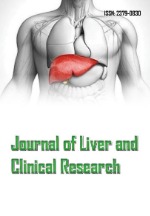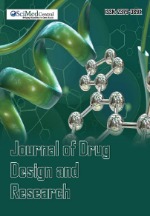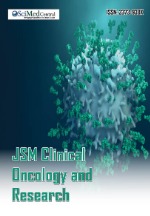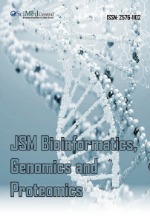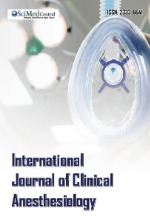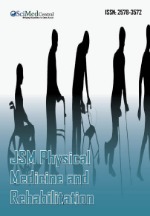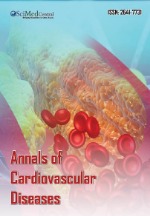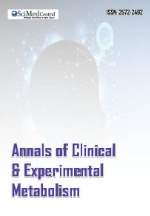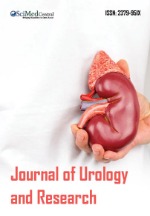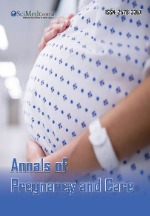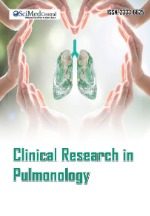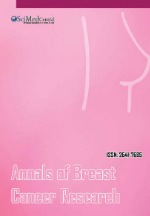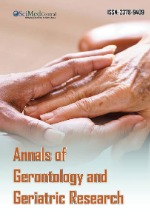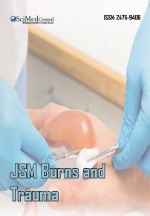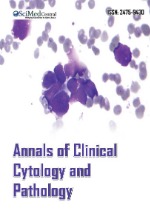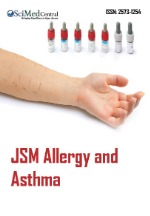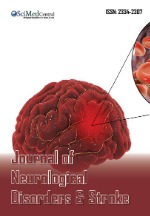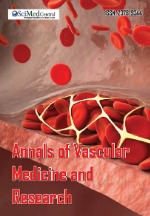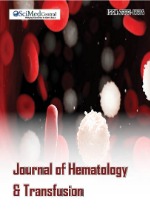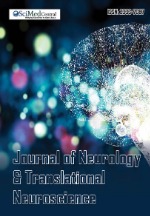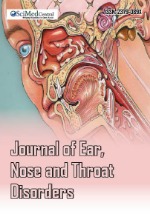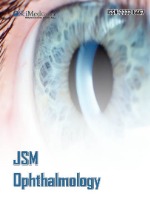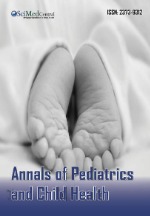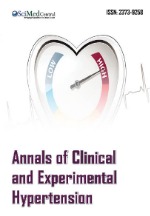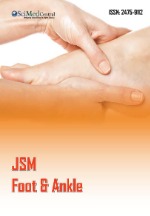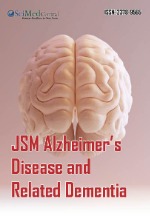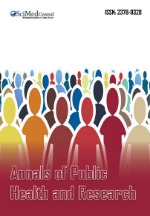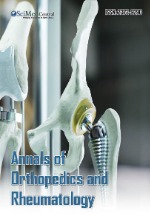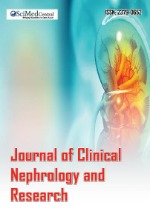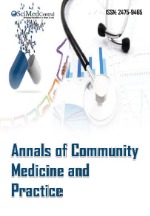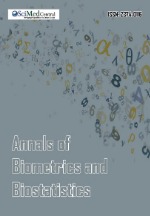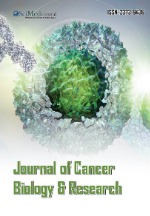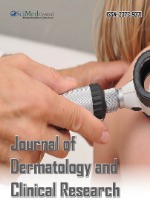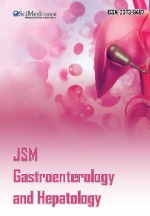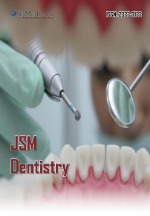Prevalence and Factor Analysis of Symptoms Associated with Premenstrual Syndrome among University Students in Nigeria
- 1. Department of Anatomy, Federal University of Lafia-Nigeria, Nigeria
- 2. Department of Physiology, Bingham University, Nigeria
ABSTRACT
The purpose of the present study was to assess the prevalence of premenstrual syndrome (PMS) using daily recording of widely reported symptoms, identify components of PMS factors, assess their interrelationships and to evaluate the effects of drug use, menarcheal and chronological age using multivariate analysis of variance (MANOVA) procedures. Data was collected using a self-administered structured questionnaire from 235 undergraduate students of Bingham University. Responses to all the 25 symptoms of PMS were done on a Likert-type scale from 1 (no symptom) to 4 (severe). Effects due to drug use, chronological and menarcheal age were tested using MANOVA procedures. The prevalence of PMS was 59.4% whereas, 14.1%, 15.1% and 30.2% of the participants reported having mild, moderate and severe symptoms respectively. Results of MANOVA revealed significant decline in symptom severity with age (F = 1.57, P <0.01) and drug use (F = 2.22, P = 0.006) while menarcheal age has no significant influence on symptom severity. Overall, the exploratory factor analysis (EFA) revealed four uncorrelated factors that cumulatively explained 50.1% of the observed variance of PMS. The four factors identified were somatic distress (40.7%), dysphoria (44.5%), cognitive disorder (86.6%) and arousal (74%). Additionally, cognitive disorder and arousal explained more than 80% of the observed variation of PMS. Confirmatory factor analysis (CFA) was used to verify the construct validity of the four latent factors, therefore warranting intervention to curb the impact of PMS on emotional wellbeing, lifestyle, academic performance, social interactions and interpersonal relations. In conclusion, our findings indicate high prevalence of PMS with peak symptom severity. Having eliminated some symptoms initially included in the questionnaire, preliminary evidence from EFA, reliability, CFA and construct validity revealed 16 most commonly experienced symptoms consisting four-factors (somatic distress, dysphoria, cognitive disorder and arousal). Symptoms of cognitive disorder are the most severe.
KEYWORDS
- Premenstrual syndrome
- Symptoms
- Prevalence
- Exploratory factor analysis
- Confirmatory factor analysis
CITATION
Monday N, Member DA, Chubiyojo SD, Talemoh DM, Yewande AH, et al. (2023) Prevalence and Factor Analysis of Symptoms Associated with Premenstrual Syndrome among University Students in Nigeria. Med J Obstet Gynecol 11(1): 1168.
INTRODUCTION
Premenstrual syndrome (PMS) is a constellation of affective, behavioural, cognitive and physical symptoms that occur cyclically during the luteal phase of menstrual cycle and resolve shortly at or within few days of the onset of menstruation. The symptoms occur during the last 3 to 10 days of menstrual cycles. Though a group of nearly 200 symptoms have been labeled PMS, these symptoms do not make up a single syndrome, but occur as clusters of symptom configurations of symptoms such as bloating, irritability, oedema, depression, headache, constipation and decreased ability to concentrate that, as mentioned previously, the symptoms are not limited to the premenstrual stage, they also occur during menstruation as well. One of the most remarking characteristics of PMS is its variability, as seen both in the menagerie of symptoms women endure and in the large variation in the prevalence of symptoms from population to population. Although more than 90% of women worldwide experience varied symptoms of PMS during their childbearing age [1]. In spite of extensive research on the aetiology and treatment of PMS, the mechanism of its pathophysiology is still poorly understood in terms of how these diverse symptoms come together. The interaction between sex steroids and brain neurotransmitters appears to be the cause of these symptoms. Changes in neurotransmitters including gamma-aminobutyric acid (GABA), serotonin and endorphins have all been implicated and females with PMS are thought be more sensitive to usual cyclical hormonal changes [2]. There is conflicting evidence to support variations (such as decrease) in endorphin levels in the serum concentrations in symptomatic patients. There may be a change in the GABA receptor complex response among women who experience PMS. Multiple studies have shown that the luteal phase is associated with decreased plasma GABA as well as decreased GABA receptor sensitivity. The most plausible theory is serotonergic dysregulation with impaired serotonergic function in the luteal phase. Selective serotonin reuptake inhibitors (SSRI) do not work on all female patients, suggesting that other factors must be at play [3-6]. Sex steroids, oestrogen, progesterone and testosterone levels are all within normal limits, but women with PMS may be more susceptible to normal fluctuations [2].
Several studies provide additional support for the lack of abnormal hormonal changes during the luteal phase. There is no connection between the timing or severity of PMS symptoms and the induction of menses, according to one study that used the progesterone antagonist mifepristone to do so [7]. In a different placebo-controlled study, it was discovered that women with PMS who had their ovarian function suppressed with a gonadotropin-releasing hormone (GnRH) agonist experienced a recurrence of their symptoms when administered oestrogen and progesterone, whereas the placebo group did not experience any change in mood [7]. This study made a compelling case for an abnormal reaction to typical hormonal changes. Prolactin, growth hormone, thyroid hormone, adrenal activity, luteinizing hormone, follicle-stimulating hormone, antidiuretic hormone, insulin, aldosterone, renin-angiotensin and cortisol have not been shown to be associated with PMS.
There are PMS treatments that are compatible with aetiological hypotheses. In order to increase central seratogenic transmission, non-hormonal therapy is the first choice, while hormonal therapy is the second. Additionally, some premenstrual symptoms may be alleviated with symptomatic treatment [8]. The most popular non-hormonal treatment is an SSRI, which improves PMS by increasing serotonin activity in the brain [9-11]. Indeed, findings suggest that SSRIs are better to a placebo in managing PMS [11,12-14]. However, several therapies in this category may have a significant number of adverse effects [9]. In this regard, women should be educated on the possible side effects of SSRIs, which include decreased libido, lethargy, sleepiness, nausea and sleeplessness with continuous use [9,12]. Additionally, a variety of vitamin deficits, such as those involving zinc, vitamin A, vitamin E, thiamine, magnesium and vitamin B6, have been suggested but not proven, and the data thus far reveal conflicting scientific evidence [15]. While psychological symptoms cannot be treated, physical symptoms can be improved with hormonal therapy by delaying ovulation and lowering hormonal swings [9,16]. In hormonal therapy, oestrogen, danazol and GnRH are administered.
In spite of the extensive research on the aetiology and treatment of PMS, it still affects the quality of life for menstruating women of whatever age, race or geographic location on monthly basis. In general, older women reported less severe symptoms than younger women [15,17,18]. Earlier studies have shown an overall prevalence of 50 – 100% adolescents reporting at least one symptom of PMS with 13 – 89% of these symptoms being classified as moderate or severe [19-25]. Premenstrual syndrome has received little attention overall, particularly in underdeveloped nation like Nigeria, despite these findings. In light of the above, cyclical hormonal fluctuations affect symptom changes and they may also have an impact on cognitive functioning during the menstrual cycle. Given that younger women experience more severe premenstrual symptoms than older women, menarcheal age may have a discernible impact on premenstrual symptoms. However, it is still unclear how changing monthly hormone levels connect to associated symptoms. Multidimensional models are necessary to show the variety of symptom interrelationships and to better understand these dynamic interrelationships. Menstrual cycle research has done some work with multidimensional models [26-30]. The main goals of this study were to: (1) assess the prevalence of PMS in female undergraduate students of Bingham University; (2) test effects due to drug use, chronological age and menarcheal age using MANOVA procedures; (3) use EFA to identify latent variables associated with symptoms of PMS; and (4) use CFA to test the construct validity of the latent variables identified in (3). It seems reasonable to argue that intervention to the resultant latent constructs can promote a healthy lifestyle, social interactions, academic performance, interpersonal relationship and emotional wellbeing of great majority of healthy, normal women. The resulting heuristic (EFA) model’s goodness-of-fit was statistically evaluated using the Kaiser-Meyer-Olkin test and Bartlett’s test of sphericity, while the CFA’s model fit was evaluated using the CMIN/DF, CFI, GFI, SRMR and RMSEA indices (see below). By employing well-established, standardized self- reported measures, the present study has the methodological advantage of grouping a sizably large number of premenstrual symptoms into a manageable number of symptoms.
METHODOLOGY AND MATERIALS
The sample comprised female students enrolled in an undergraduate degree program at the Bingham University, Karu, Nasarawa State, Nigeria. The study was carried out between February to June 2022. Participation in this study was voluntary, and took place outside scheduled classes. Virtually all participants agreed to participate in the study voluntarily and were contacted in their hostels or classes. Their telephone and hostel numbers were also collected to ease tracking. The goal and content of the study was fully explained to each female student contacted. Only participants who gave their written assent to voluntarily participate in the study were included. The sample is a mixture of students from multicultural and ethnic backgrounds, typical of metropolitan Nigeria. The students were apparently healthy and were likely to be experiencing on average minimal changes in menstrual cycle symptoms. Because earlier studies have reported linear association between age and PMS (Moos, 1985), age was divided into quartiles: 1) 16 – 18; 2)19 – 20; 3) 21 – 21; 4) 22 – 25, in order to examine its influence as an explanatory variable within the MANOVA model. Participants were further classified quartiles according to menarcheal age 1) 9 – 11; 2) 12 – 12; 3) 13 – 13; and 4) 14 – 16. The choice of quartile was to maintain the number of subjects per age band comparable, thereby maintaining homogeneity of variance. Also, subjects were dichotomized with respect to use of medication to relief pains due to PMS (on medication vs. not on medication). As in the case with chronological age, menarcheal age and use of medication were also used as independent variables to test their effects within the MANOVA design.
Data collection
The self-administered questionnaire used for data collection was divided into three sections: 1) sociodemographic characteristics (chronological age, menarcheal age, marital status, number of children and ethnic background) 2) menstrual characteristics (number of days of bleeding, length of menstruation, use of oral contraceptives, use of medication, strategy used to relieve pain, symptoms of PMS and its severity) and 3) symptoms of PMS. The 25 items included in the questionnaire we developed were generated from multiple sources including those from our questionnaire of our early PMS study [31], the Premenstrual Assessment Form [32], the Moos Menstrual Distress Questionnaire [33], Woods and colleagues [34], among other literature. Participants rated their experiences in one premenstrual cycle on a 1 – 4 Likert-type scale, with 1 indicating “not present” and 4 represented “severe”. Participants were classified as having premenstrual syndrome if they report having at least one of the somatic and cognitive symptoms occurring 13 days prior to and 4 days into menstruation [5]. The 235 participants whose data were collected filled the first two sections of the questionnaire except the 25 items constituting symptoms of PMS. Their responses were checked and were asked to indicate the severity of each of the 25 items in the checklist of PMS 13 days prior to and 4 days into menstruation. Sequel to data collection, a pilot study (data unpublished) was organized on 20 students. Internal structure of the questionnaire was then measured by means of Cronbach’s alpha (alpha coefficient = 0.84), suggesting good reliability of the items in the instrument.
Sample
The desired sample size for the study was 267 female undergraduate students, as calculated by the formula: n = z2pq/ d2, where n = number of participants required; z = z statistic if a particular level of confidence (95%: z = 1.96), p = expected prevalence or proportion of an indicator, q = 1 – p, and d = precision. The precision was set as 6% (due to difficulty tracking participants to premenstrual stage and not to interfere with their studies) for a prevalence of 50%. Data from 235 (88% of target sample size) female students constitute the final analytic sample for the study. The study protocol was reviewed and approved by Ahmadu Bello University Ethics Committee on Use of Human Subjects for Research. The study protocol was reviewed and approved by Bingham University Research and Ethical Committee in accordance with the Helsinki recommendations.
Data management and statistical analysis
Descriptive statistics were presented in frequencies, percentages, means and standard deviations. Chi-square was used to test for associations while Spearman’s rank correlations were examined to test associations between symptoms of PMS. Initially, the 25 symptoms of PMS, which were previously reported by the respondents were reduced into 16 symptoms of four underlying constructs or factor scores using exploratory factor analysis (EFA). The 16 symptoms of four factors were then transitioned to confirmatory factor analysis (CFA) to validate the symptoms of PMS. All statistical analysis was carried out using the Statistical Package for Social Sciences (IBM SPSS Incorp., Illinois Chicago, USA) version 26 and IBM SPSS AMOS version 21 for Windows.
Multivariate Analysis of Variance
Multivariate analysis of variance (MANOVA) is primarily a procedure used for describing differences between two or more groups on linear combinations of multiple dependent variables. In the present study, three-group MANOVA within the framework of a 2 (drug use) x 4 (age) x 4 menarcheal age between-group experimental setup was used to test for difference in intensity of the dependent variables. The dependent variables consist of the 16 symptoms of PMS.
Exploratory Factor Analysis
Exploratory factor analysis was used to identify factor structures of symptoms of PMS. This technique was used to test the hypothesis that latent variables underlie responses to observed variables (symptoms of PMS), as such, we wish to cluster observed variables into a small manageable number of underlying factors that account for the relationship among the larger set of symptoms of PMS. This is done by ascertaining how many factors exist and pattern of the factor loadings. Because the goal of this study was to identify the dimensions of symptoms of PMS, as measured by a structured PMS questionnaire, exploratory factor analysis using principal component axis (PAF) was used with the oblique rotation method. The oblique rotation we selected was the commonly employed direct quartimin. To avoid over- or under-factoring, we used the following statistical and visual diagnostic tools to guide our final choice of factors present. These criteria include factors that: (1) had eigenvalues above 1 in circumstances in which the unreduced correlation matrix was used, (2) were recommended based on inspecting a scree plots eigenvalue from the reduced correlation matrix, which is in line with PAF, (3) had eigenvalues greater than expected as observed from parallel analysis, and (4) were conceptually consistent when all factor analysis results were considered. The 16 items on the scale represented possible dimensions of PMS. A 4-point Likert scale was used (from “no symptom” to “severely”).
To initiate the EPA, we requested a factor solution based on eigenvalues, given we selected symptoms of PMS commonly reported from distinct dimensions. Although application of Kaiser’s rule (i.e., eigenvalues > 1) suggested the presence of 5 factors. However, parallel analysis indicated 4 factors, visual inspection of the scree plot suggested 4 plausible factors. Considering that these criteria differed on the number of possible factors present, we then evaluated the results from a five-factor solution, but realized that the four-factor solution was more conceptually meaningful. Cronbach’s alpha reliability coefficient was used to measure for internal consistency of the latent factors. The resultant EPA model was subsequently used to model confirmatory factor analysis.
Confirmatory Factor Analysis
After exploring factor structure underlying symptoms of PMS using EFA (a heuristic technique), confirmatory factor analysis (CFA) was used to provide further support that a relationship between measured or indicator variables and their underlying factor structure hypothesized by the EFA exists. This analysis is strong empirical or strong theory base data reduction technique used to explain covariance among different observed variables thereby large number of variables of interest into a relatively small number of underlying unobserved variables called factors. The results of CFA models give a path diagram in IBM SPSS Amos. In this study, there were 16 symptoms (observed variables) in the rectangular boxes, which have covariance that corresponds to the latent factor. The reported symptoms of PMS are related to the latent factor through factor loadings which are conceptually regression coefficients. As in traditional regression analysis, when a variable is endogenous (dependent), it will have both explained (such as R square) and unexplained variance. Thus, a part of variance of the observed variables that cannot be explained by the latent factor is called error terms of the model and therefore identical to each observed variable. In general, error terms are considered as exogenous variables since they exert direct effects on endogenous variables.
RESULTS
The total number of participants in the present study are 235 female undergraduate students with the mean age of 20.26 ± 1.89 years (range 16 to 25) years. Most of them 123 (52.3%) were from other ethnic groups whereas 34 (14.5%), 40 (17.0%) and 38 (16.2%) were from Hausa, Igbo and Yoruba ethnic groups respectively. Their mean menarcheal age was 12.42 ± 1.46 years ranging from 9 to 16 years. Most of the participants in this study 130 (55.3%) reported not using menstrual pain medications while, 105 (44.7%) reported using various types of drugs. Table 1 shows the results of descriptive analysis conducted for the various variables of each scale. The results also showed that 101 (43.0%) of the participants reported a menstrual cycle of between 21 – 27 days while, most 89 (37.9%) reported 4 – 5 days of bleeding.
Table 1: Sociodemographic and menstrual characteristics of the respondents
|
|
|
Frequency |
Percent (%) |
|
Chronological age, y |
16 – 18 |
44 |
18.7 |
|
|
19 – 20 |
89 |
37.9 |
|
|
21 – 21 |
45 |
19.1 |
|
|
22 – 25 |
57 |
24.3 |
|
Menarcheal age (y) |
|
|
|
|
|
9 – 11 |
57 |
24.4 |
|
|
12 – 12 |
57 |
24.4 |
|
|
13 – 13 |
69 |
29.5 |
|
|
14 – 16 |
51 |
21.8 |
|
Gynaecological age |
|
|
|
|
|
3 – 6 |
61 |
26.0 |
|
|
7 – 7 |
46 |
19.6 |
|
|
8 – 9 |
72 |
30.6 |
|
|
10 – 12 |
56 |
23.8 |
|
Length of menstruation |
|
|
|
|
|
21 – 27 |
101 |
43.0 |
|
|
28 – 30 |
84 |
35.7 |
|
|
Irregular |
50 |
21.3 |
|
No of days of bleeding |
|
|
|
|
|
<= 3 |
72 |
30.6 |
|
|
4 – 5 |
89 |
37.9 |
|
|
> 5 |
74 |
31.5 |
|
Use of medication |
|
|
|
|
|
Yes |
105 |
44.7 |
|
|
No |
130 |
55.3 |
Table 2 shows the association between quartiles of age, menstrual characteristics and severity of PMS of the respondents. None of the variables showed significant association with intensity of PMS.
Table 2: Association between age, menstrual characteristics and severity of PMS
|
|
|
Mild |
Moderate |
Severe |
|
|
|
|
|
% (n) |
% (n) |
% (n) |
χ2 |
P |
|
Chronological age, y |
Q1 (16 – 18) |
6 (4.1) |
7 (4.8) |
13 (9.0) |
0.17 |
0.998 |
|
|
Q2 (19 – 20) |
12 (8.3) |
13 (9.0) |
26 (17.9) |
|
|
|
|
Q3 (21 – 21) |
6 (4.1) |
7 (4.8) |
15 (10.3) |
|
|
|
|
Q4 (22 – 25) |
10 (6.9) |
10 (6.9) |
20 (13.8) |
|
|
|
Menarcheal age (y) |
|
|
|
|
|
|
|
|
Q1 (9 – 11) |
8 (5.5) |
8 (5.5) |
19 (13.0) |
0.67 |
0.995 |
|
|
Q2 (12 – 12) |
10 (6.8) |
9 (6.2) |
19 (13.0) |
|
|
|
|
Q3 (13 – 13) |
9 (6.2) |
11 (7.5) |
22 (15.1) |
|
|
|
|
Q4 (14 – 16) |
8 (5.5) |
9 (6.2) |
15 (10.3) |
|
|
|
Gynaecological age |
|
|
|
|
|
|
|
|
Q1 (3 – 6) |
9 (6.2) |
10 (6.8) |
19 (13.0) |
0.26 |
0.996 |
|
|
Q2 (7 – 7) |
6 (4.1) |
7 (4.8) |
15 (10.3) |
|
|
|
|
Q3 (8 – 9) |
11 (7.5) |
11 (7.5) |
23 (15.8) |
|
|
|
|
Q4 (10 – 12) |
9 (6.2) |
8 (5.5) |
18 (12.3) |
|
|
|
Length of menstruation |
|
|
|
|
|
|
|
|
21 – 27 |
14 (9.6) |
16 (11.0) |
32 (21.9) |
0.05 |
0.999 |
|
|
28 – 30 |
13 (8.9) |
14 (9.6) |
27 (18.5) |
|
|
|
|
Irregular |
7 (4.8) |
8 (5.5) |
15 (10.3) |
|
|
|
No of days of bleeding |
|
|
|
|
|
|
|
|
<= 3 |
10 (6.8) |
11 (7.5) |
23 (15.8) |
0.16 |
0.997 |
|
|
4 – 5 |
14 (9.6) |
14 (9.6) |
28 (19.2) |
|
|
|
|
> 5 |
10 (6.8) |
12 (8.2) |
23 (15.8) |
|
|
|
Use of medication |
|
|
|
|
|
|
|
|
Yes |
15 (10.3) |
17 (11.7) |
33 (22.8) |
0.01 |
0.994 |
|
|
No |
19 (13.1) |
21 (14.5) |
40 (27.6) |
|
|
Table 3 showed the association between age, menstrual characteristics and PMS status. There was no significant association between age, menstrual characteristics and presence of PMS.
Table 3: Association between age, menstrual characteristics and presence of PMS
|
|
|
Presence of PMS |
|
|
|
|
Variables |
Categories |
Yes |
No |
χ2 |
P |
|
Chronological age, y |
Q1 (16 – 18) |
27 (11.5) |
18 (7.7) |
1.55 |
0.670 |
|
|
Q2 (19 – 20) |
52 (22.1) |
37 (15.7) |
|
|
|
|
Q3 (21 – 21) |
28 (11.9) |
17 (7.2) |
|
|
|
|
Q4 (22 – 25) |
39 (16.8) |
18 (7.7) |
|
|
|
Menarcheal age (y) |
|
|
|
|
|
|
|
Q1 (9 – 11) |
35 (14.9) |
24 (10.2) |
0.80 |
0.849 |
|
|
Q2 (12 – 12) |
38 (16.2) |
19 (8.1) |
|
|
|
|
Q3 (13 – 13) |
41 (17.4) |
27 (11.5) |
|
|
|
|
Q4 (14 – 16) |
32 (13.6) |
19 (8.1) |
|
|
|
Gynaecological age |
|
|
|
|
|
|
|
Q1 (3 – 6) |
38 (16.2) |
23 (9.8) |
0.04 |
0.998 |
|
|
Q2 (7 – 7) |
28 (11.9) |
18 (7.7) |
|
|
|
|
Q3 (8 – 9) |
45 (19.1) |
27 (11.5) |
|
|
|
|
Q4 (10 – 12) |
35 (14.9) |
22 (9.4) |
|
|
|
Length of menstruation |
|
|
|
|
|
|
|
21 – 27 |
62 (26.4) |
39 (16.6) |
0.06 |
0.972 |
|
|
28 – 30 |
53 (22.6) |
31 (13.2) |
|
|
|
|
Irregular |
31 (13.2) |
19 (8.1) |
|
|
|
No of days of bleeding |
|
|
|
|
|
|
|
<= 3 |
45 (19.1) |
27 (11.5) |
0.01 |
0.995 |
|
|
4 – 5 |
56 (23.8) |
33 (14.0) |
|
|
|
|
> 5 |
46 (19.6) |
28 (11.9) |
|
|
|
Use of medication |
|
|
|
|
|
|
|
Yes |
65 (27.8) |
40 (17.1) |
0.01 |
0.906 |
|
|
No |
80 (34.2) |
49 (20.9) |
|
|
The prevalence and 95% confidence interval of PMS was 59.4% (95% CI 57.8 – 60.9%) while 14.1% (95% CI 13.0 – 15.2%), 15.1% (95% CI 14.0 – 16.3%) and 30.2% (95% CI 28.8 – 31.7%) report having mild, moderate and severe symptoms. The somatic distress symptoms (chest pain, ringing in the ears, heart pounding, numbness/tingling and blind spot/fuzzy vision) were present in 40.7% of the sample. Also, dysphoric symptoms (forgetfulness, confusion, lowered judgement and accident tendency) were present in 44.5% of the university students. Whereas, symptoms of cognitive disorder (stay at home, avoid social activities, take nap/stay at home and irritability) and arousal (insomnia, fatigue and anxiety) were present in 86.6% and 74.0%. The distribution of severity of the various symptoms of PMS is presented in Table 4. Correlations between the various symptoms of PMS are also shown in Table 4.
Table 4: Premenstrual symptom severity and correlation matrix (N = 235)
|
|
|
Mild |
Moderate |
Severe |
Total |
2 |
3 |
4 |
5 |
6 |
7 |
8 |
9 |
10 |
11 |
12 |
13 |
14 |
15 |
16 |
|
1. |
PMS1 |
3 7 (15.7) |
24 (10.2) |
40 (17.0) |
101 (42.9) |
0.62a |
0.50a |
0.51a |
0.06 |
0.01 |
0.05 |
0.09 |
0.15b |
0.16b |
0.17a |
0.34a |
0.42a |
0.18a |
0.20a |
0.20a |
|
2. |
PMS2 |
3 9 (16.6) |
37 (15.7) |
42 (17.9) |
118 (50.2) |
1.00 |
0.52a |
0.47a |
0.08 |
0.05 |
0.17a |
0.06 |
0.12 |
0.23a |
0.12 |
0.35a |
0.49a |
0.33a |
0.26a |
0.33a |
|
3. |
PMS3 |
3 3 (14.0) |
41 (17.4) |
38 (16.2) |
112 (47.6) |
|
1.00 |
0.49a |
0.13b |
0.05 |
0.11 |
0.06 |
0.04 |
0.21a |
0.10 |
0.33a |
0.44a |
0.19a |
0.24a |
0.29a |
|
4. |
PMS4 |
3 5 (14.9) |
25 (10.6) |
27 (11.5) |
87 (37.0) |
|
|
1.00 |
0.06 |
-0.06 |
-0.02 |
0.01 |
0.18a |
0.17a |
0.20a |
0.38a |
0.39a |
0.30a |
0.34a |
0.30a |
|
5. |
PMS5 |
3 0 (12.8) |
39 (16.6) |
143 (60.9) |
212 (90.3) |
|
|
|
1.00 |
0.53a |
0.48a |
0.38a |
0.20a |
0.09 |
0.12 |
0.09 |
0.04 |
0.13 |
0.20a |
0.16b |
|
6. |
PMS6 |
2 7 (11.5) |
47 (20.0) |
128 (54.5) |
202 (86.0) |
|
|
|
|
1.00 |
0.58a |
0.39a |
0.20a |
0.11 |
0.09 |
0.05 |
0.01 |
0.07 |
0.05 |
0.11 |
|
7. |
PMS7 |
2 4 (10.2) |
40 (17.0) |
134 (57.0) |
198 (84.2) |
|
|
|
|
|
1.00 |
0.34a |
0.17a |
0.22a |
0.18a |
0.12 |
0.09 |
0.13 |
0.07 |
0.16b |
|
8. |
PMS8 |
2 5 (10.6) |
43 (18.3) |
134 (57.0) |
202 (85.9) |
|
|
|
|
|
|
1.00 |
0.24a |
0.10 |
0.07 |
0.07 |
-0.03 |
0.05 |
0.15b |
0.19a |
|
9. |
PMS9 |
4 0 (17.0) |
47 (20.0) |
73 (31.1) |
160 (68.1) |
|
|
|
|
|
|
|
1.00 |
0.42a |
0.32a |
0.14b |
0.06 |
0.07 |
0.24a |
0.13b |
|
10. |
PMS10 |
4 2 (17.9) |
40 (17.0) |
100 (42.6) |
182 (77.5) |
|
|
|
|
|
|
|
|
1.00 |
0.45a |
0.30a |
0.22a |
0.24a |
0.22a |
0.16b |
|
11. |
PMS11 |
5 8 (24.7) |
38 (16.2) |
84 (35.7) |
180 (76.6) |
|
|
|
|
|
|
|
|
|
1.00 |
0.15b |
0.07 |
0.11 |
0.08 |
0.05 |
|
12. |
PMS12 |
2 5 (10.6) |
28 (11.9) |
36 (15.3) |
89 (37.8) |
|
|
|
|
|
|
|
|
|
|
1.00 |
0.60a |
0.59a |
0.47a |
0.44a |
|
13. |
PMS13 |
18 (7.7) |
24 (10.2) |
39 (16.6) |
81 (34.5) |
|
|
|
|
|
|
|
|
|
|
|
1.00 |
0.54a |
0.49a |
0.51a |
|
14. |
PMS14 |
3 5 (14.9) |
29 (12.3) |
49 (20.9) |
113 (48.1) |
|
|
|
|
|
|
|
|
|
|
|
|
1.00 |
0.52a |
0.52a |
|
15. |
PMS15 |
3 0 (12.8) |
32 (13.6) |
33 (14.0) |
95 (40.4) |
|
|
|
|
|
|
|
|
|
|
|
|
|
1.00 |
0.53a |
|
16. |
PMS16 |
3 0 (12.8) |
34 (14.5) |
36 (15.3) |
100 (42.6) |
|
|
|
|
|
|
|
|
|
|
|
|
|
|
1.00 |
|
Total (%) |
14.1 |
15.1 |
30.2 |
|
|
|
|
|
|
|
|
|
|
|
|
|
|
|
|
|
PMS1 = Forgetfulness, PMS2 = Confusion, PMS3 = Lowered judgement, PMS4 = Accident tendency, PMS5 = Take naps/stay in bed, PMS6 = Stay at home, PMS7 = Avoid social activities, PMS8 = Irritability, PMS9 = Anxiety, PMS10 = Insomnia, PMS11 = Fatigue, PMS12 = Chest pain, PMS13 = Ringing in the ears, PMS14 = Heart pounding, PMS15 = Numbness/tingling, PMS16 = Blindspot/fuzzy vision. aP <0.01; bP<0.05
The bivariate correlations results showed linear and significant relations between most of the variables. Examining the correlations, generally it seems to validate the four hypothesized dimensions because correlations are reasonably higher within each dimension than across dimensions. For instance, factors within somatic distress (chest pain, ringing in the ears, heart pounding, numbness/tingling and blind spot/ fuzzy vision) are more highly significantly correlated than any other symptoms. The pattern was the same for the other three factors.The multivariate main effect for use of drugs was statistically significant (F= 2.22, P = 0.006) (Table 5).
Table 5: Multivariate analysis of variance of drug use, chronological and menarcheal ages on symptoms of PMS
|
|
Value |
F |
DF |
Error df |
P |
|
Drug |
0.12 |
2.220 |
16.00 |
188.00 |
0.006 |
|
Age |
0.33 |
1.568 |
48.00 |
570.00 |
0.010 |
|
MA |
0.20 |
0.744 |
48.00 |
570.00 |
0.898 |
|
Drug x Age |
0.21 |
1.005 |
48.00 |
570.00 |
0.466 |
|
Drug x MA |
0.21 |
1.015 |
48.00 |
570.00 |
0.449 |
|
Age x MA |
0.73 |
1.059 |
144.00 |
1764.00 |
0.305 |
|
Drug x Age x MA |
0.73 |
1.222 |
128.00 |
1560.00 |
0.053 |
Note: Age; chronological age, MA; menarcheal age. Boldface indicate statistical significance
Students on medication exhibited significantly higher mean scores on each of the following univariates: Forgetfulness (F = 8.77, P = 0.003) – (2.11 vs. 1.68); Confusion (F = 12.92, P <0.001) – (2.31 vs. 1.78); Accident tendency (F = 10.23, P = 0.002) – (1.92 vs. 1.51); Chest pain (F = 4.26, P = 0.040) – (1.98 vs. 1.67); Ringing in the ears (F = 10.91, P <0.001) – (2.05 vs. 1.57); Numbness/tingling (F = 10.24, P = 0.002) – (2.06 vs. 1.61) and statistically significant higher mean score on Blind spot (F = 10.55, P <0.001) – (2.12 vs. 1.66). Based on these evidences, it would appear that those who report use of pills are those who commonly experience severe symptoms of dysphoria and somatic distress rather than arousal or cognitive disorder. Since the data was collected at the premenstrual phase, perhaps the mean scores of the scores would have been lower following the ameliorative influence pills usage. The multivariate main effect for age was statistically significant (F = 1.57, P <0.010). Of the 16 variables, statistically significant main effects occurred on only two ages: Forgetfulness (F = 3.11, P = 0.028) and Lowered judgement (F = 8.97, P <0.001). However, none of the multivariate main effects for menarcheal age were statistically significant, suggesting that menarcheal age impacts were not pronounced in the present study. Also, none of the multivariate interaction effects were statistically significant, this enabled a relatively clear-cut interpretation of the statistical results.
Regarding univariate effects (Table 6), none of the symptoms of PMS exhibited significant differences in relation to menarcheal age. On this evidence, it would appear that onset of menarche has no influence on symptoms of PMS. Similarly, interactions between drug use, chronological age and menarcheal age have no significant effects on PMS, whereas only two of the symptoms of PMS (accident tendency and blind spot/fuzzy vision) differed significantly in relation to age vs. menarcheal age. Conceivably, these two significant univariate effects for symptoms of PMS might have occurred by chance alone. Even though as much as three univariate effects related interactions between drug use vs. age vs. menarcheal age were statistically significant, most of the “observed differences” in mean scores were rather trivial and of minor practical consequence.
Table 6: Univariate analysis for drug use, chronological age, menarcheal age and factor interaction
|
|
Drug use |
Age |
MA |
Drug x age |
Drug x MA |
Age x MA |
Drug x Age x MA |
|||||||
|
Symptoms |
F |
P |
F |
P |
F |
P |
F |
P |
F |
P |
F |
P |
F |
P |
|
Forgetfulness |
8.77 |
0.003 |
3.11 |
0.028 |
1.08 |
0.360 |
0.73 |
0.533 |
1.24 |
0.297 |
1.89 |
0.056 |
0.88 |
0.535 |
|
Confusion |
12.92 |
<0.001 |
1.42 |
0.238 |
0.48 |
0.697 |
0.69 |
0.561 |
0.94 |
0.424 |
1.61 |
0.113 |
1.58 |
0.133 |
|
Lowered judgement |
3.47 |
0.064 |
8.97 |
<0.001 |
0.08 |
0.969 |
1.52 |
0.211 |
0.91 |
0.437 |
0.92 |
0.506 |
2.24 |
0.026 |
|
Accident tendency |
10.23 |
0.002 |
0.96 |
0.412 |
1.00 |
0.395 |
1.76 |
0.156 |
0.72 |
0.539 |
2.03 |
0.038 |
2.61 |
0.010 |
|
Take naps/stay in bed |
1.85 |
0.175 |
1.73 |
0.162 |
0.56 |
0.639 |
0.57 |
0.633 |
0.61 |
0.607 |
1.45 |
0.168 |
0.67 |
0.718 |
|
Stay at home |
0.07 |
0.790 |
2.01 |
0.113 |
0.40 |
0.751 |
0.06 |
0.979 |
0.96 |
0.414 |
0.35 |
0.955 |
1.46 |
0.172 |
|
Avoid social activities |
0.22 |
0.641 |
0.95 |
0.416 |
1.30 |
0.276 |
0.57 |
0.638 |
0.92 |
0.433 |
0.74 |
0.672 |
0.75 |
0.649 |
|
Irritability |
0.49 |
0.484 |
0.96 |
0.411 |
0.82 |
0.484 |
0.93 |
0.425 |
0.79 |
0.501 |
1.15 |
0.331 |
1.30 |
0.247 |
|
Anxiety |
0.24 |
0.624 |
0.54 |
0.654 |
0.49 |
0.693 |
0.98 |
0.405 |
0.19 |
0.900 |
1.48 |
0.157 |
1.07 |
0.382 |
|
Insomnia |
0.33 |
0.565 |
1.29 |
0.279 |
0.37 |
0.776 |
1.27 |
0.286 |
1.60 |
0.191 |
0.50 |
0.877 |
0.92 |
0.502 |
|
Fatigue |
0.05 |
0.816 |
0.14 |
0.937 |
0.16 |
0.921 |
0.69 |
0.556 |
0.22 |
0.884 |
1.69 |
0.094 |
0.69 |
0.698 |
|
Chest pain |
4.26 |
0.040 |
0.15 |
0.932 |
0.32 |
0.808 |
0.36 |
0.783 |
1.51 |
0.213 |
1.10 |
0.368 |
0.68 |
0.708 |
|
Ringing in the ears |
10.91 |
<0.001 |
1.71 |
0.166 |
0.78 |
0.505 |
1.45 |
0.230 |
0.85 |
0.466 |
1.35 |
0.215 |
2.61 |
0.010 |
|
Heart pounding |
2.73 |
0.100 |
1.17 |
0.324 |
0.12 |
0.946 |
1.24 |
0.296 |
0.43 |
0.735 |
1.28 |
0.250 |
1.33 |
0.233 |
|
Numbness/tingling |
10.24 |
0.002 |
1.97 |
0.119 |
0.68 |
0.568 |
2.15 |
0.095 |
0.16 |
0.925 |
1.90 |
0.053 |
1.97 |
0.052 |
|
Blindspot/fuzzy vision |
10.55 |
<0.001 |
1.04 |
0.375 |
0.56 |
0.643 |
0.73 |
0.536 |
2.21 |
0.088 |
2.53 |
0.009 |
0.88 |
0.534 |
Age; chronological age (years), MA; menarcheal age (years); Statistical significance was expressed in boldface
Exploratory Fitting of Latent Variables
Exploratory factor analysis was employed to explore the latent structure of PMS using principal axis factoring extraction procedure with direct Oblimin rotation (Table 7). Factor solution of PMS converged in seven iterations, and the Scree plot of the eigenvalues clearly indicated four unique higher-order constructs (factors), accounting for 50.091% of the variance associated with the unrotated component factors. With the Scree plot essentially leveling off entirely after the fourth construct, we further employed the Kaiser’s rule of retaining factors having eigenvalues greater than 1 (the first four eigenvalues were: 4.650, 2.420, 1.521 and 1.394 respectively). Factor 1 labeled as somatic distress loaded strongly on heart pounding, numbness/tingling, ringing in the ears, blind spot/fuzzy vision and chest pain. Factor 2 labeled as dysphoria loaded strongly on forgetfulness, confusion, lowered judgement and accident tendency. Factor 3 labeled as cognitive disorder loaded strongly on stay at home, avoid social activities, take naps/stay in bed and irritability. Factor 4 labeled as arousal loaded strongly on insomnia, fatigue and anxiety. The communalities range from 0.2275 to 0.629, suggesting that each symptom is at least moderately and at times strongly associated to the set of factors. Consequently, results from the EFA provided the four latent variables subsequently used to develop confirmatory factor analytic analyses of premenstrual symptoms.
Table 7: Loading matrix from exploratory factor analysis using Oblimin rotation and internal scale consistency test for symptoms of PMS
|
Symptoms |
1 |
2 |
3 |
4 |
h2 |
|
Heart pounding |
0.755 |
0.115 |
0.057 |
0.091 |
0.536 |
|
Numbness/tingling |
0.669 |
0.134 |
0.091 |
0.138 |
0.624 |
|
Ringing in the ears |
0.663 |
0.428 |
-0.022 |
0.023 |
0.595 |
|
Blindspot/fuzzy vision |
0.658 |
0.181 |
0.164 |
0.017 |
0.493 |
|
Chest pain |
0.653 |
0.284 |
0.029 |
0.169 |
0.493 |
|
Forgetfulness |
0.118 |
0.774 |
0.013 |
0.125 |
0.629 |
|
Confusion |
0.265 |
0.705 |
0.079 |
0.084 |
0.581 |
|
Lowered judgement |
0.189 |
0.658 |
0.077 |
0.042 |
0.476 |
|
Accident tendency |
0.286 |
0.585 |
-0.066 |
0.167 |
0.456 |
|
Stay at home |
0.012 |
-0.025 |
0.790 |
0.060 |
0.474 |
|
Social isolation |
0.063 |
0.052 |
0.687 |
0.150 |
0.628 |
|
Take naps/stay in bed |
0.096 |
0.043 |
0.677 |
0.069 |
0.501 |
|
Irritability |
0.060 |
0.017 |
0.510 |
0.104 |
0.275 |
|
Insomnia |
0.202 |
0.110 |
0.080 |
0.700 |
0.339 |
|
Fatigue |
0.014 |
0.119 |
0.081 |
0.587 |
0.550 |
|
Anxiety |
0.086 |
0.050 |
0.208 |
0.534 |
0.366 |
|
% of variance explained |
16.143% |
13.961% |
12.043% |
7.944% |
Total = 50.091% |
|
Eigenvalues |
4.650 |
2.420 |
1.521 |
1.394 |
|
|
Cronbach’s alpha coefficient* |
0.844 |
0.811 |
0.766 |
0.765 |
Total = 0.824 |
|
Inter-factor correlations |
|
|
|
|
|
|
1 |
1.000 |
0.485 |
0.139 |
0.284 |
|
|
2 |
|
1.000 |
0.054 |
0.268 |
|
|
3 |
|
|
1.000 |
0.242 |
|
|
4 |
|
|
|
1.000 |
|
Boldface indicate the number of items corresponding to the factor
Notes: Factor 1 = Somatic Distress, Factor 2 = Dysphoria, Factor 3 = Cognitive Disorder, Factor 4 = Arousal. In general, correlations across dimensions are low than within dimension. While Factors 1 and 2 are moderately correlated (0.485), Factors 3 and 2 showed least correlation.
Kaiser-Meyer-Olkin test = 0.828, Bartlett’s test of sphericity χ2 = 1307.495 (P <0.001), h2 = Commonalities estimates.
Confirmatory Factor Analysis
Use of confirmatory factor analysis enabled testing of the heuristic model from EFA of symptoms of PMS interactions. The path diagram (Figure 1) depicts the hypothesized dimensions, variability across symptoms of PMS in terms of the putative associations between the four latent constructs and their respective coefficients and unobserved construct of measurement errors of the model. No attempt was made to include the influence of use of drugs, chronological and menarcheal age, as the main concern of this study was to explore interrelationships between symptoms of PMS undiluted by extraneous variables such as drugs. Hence, the primary purpose of the study was to explore “normal” associations between symptoms of PMS at the premenstrual phase in a sample of non-clinical healthy young students. The Chi-square fit statistics/degree of freedom (CMIN/ DF) was 1.706, comparative fit index (CFI) was 0.943, goodness of fit index (GFI) was 0.916, Standardized Root Mean Squared Residual (SRMR) was 0.0515 while the root mean-square error of approximation (RMSEA) was 0.055 with 95% CI of 0.04 to 0.07. Indices of the model fit indicate good fit of the CFA model to the data.
Figure 1 Latent variable path analysis for premenstrual symptoms showing model parameters. The estimates of the respective factor loadings were as indicated and the error terms of the model for each respective observed variable was also calculated PMS1 = Forgetfulness, PMS2 = Confusion, PMS3 = Lowered judgement, PMS4 = Accident tendency, PMS5 = Take naps/stay in bed, PMS6 = Stay at home, PMS7 = Social isolation, PMS8 = Irritability, PMS9 = Anxiety, PMS10 = Insomnia, PMS11 = Fatigue, PMS12 = Chest pain, PMS13 = Ringing in the ears, PMS14 = Heart pounding, PMS15 = Numbness/tingling, PMS16 = Blindspot/fuzzy vision
DISCUSSION
Studies across the world have demonstrated that PMS is a common condition among women of reproductive age and it interferes with their daily social life. Hence identification of the most common symptoms and their covariance would be helpful for an effective management. The prevalence of PMS (59.4%) in our sample is substantially lower than our earlier estimates [31]. The prevalence is also lower than that earlier reported in Nigeria [35,36], and 81.3% reported in Northwest Ethiopia [37], but higher than the 46.9%, 37.0% and 39.5% rates previously reported in Midwest Brazil [38], Northern Ethiopia [39], and Taiwan [40] respectively. However, similar findings have been reported elsewhere. Mahesh et al., reported that 59% of medical students of Jinnah Medical and Dental College, Karachi was characterized as having PMS, whereas, Derman et al. [21], and Silva et al. [41], reported prevalence rate of 61.4% and 60.3% respectively. A cross-sectional study of Saudi Arabian medical students aged 20.07 ± 0.97 years also revealed that PMS was diagnosed in 89 (35.6%) of the participants [42]. A meta-analysis reported a pooled prevalence of 47.8% worldwide [43]. However, the prevalence of PMS was found to be similar to a previous study by Sarkar et al. [44], in West Bengal who reported a prevalence of 61.5% among adolescent girl students in a rural school of West Bengal.
The diverse techniques, populations, assessment instruments and result categorization instruments utilized in the reviewed studies may explain the considerable variation in global prevalence rates from the meta-analysis. The lower prevalence rate compared to our previous study was quite unexpected. However, it is noteworthy that difference in prevalence is as a result of differences in age composition of the study samples, the number of symptoms included, sample size and the methodological design set by investigators. Given that majority of the subjects in our study were young healthy women, it was anticipated that both the rate and symptom intensity will be high. Our results showed relatively lower prevalence rate but high symptom severity pattern, in that participant who report severe symptoms clearly constitute a majority of all participants. Most subjects reported having severe symptoms (30.2%) followed by those who reported moderate symptoms (15.1%) while 14.1% reported having mild symptoms. The three symptom severity groups differ significantly in proportion (χ2 = 319.77, P <0.001).
As shown in Table 4, the most commonly reported premenstrual symptoms are cognitive disorders. Regarding cognitive disorders, feelings to take nap/stay in bed was the most reported 212 (90.3%), followed by feeling to stay at home and irritability 202 (86.0%) each. Tendency to avoid social activities 198 (84.2%), though the least among cognitive disorders, was still higher than other symptoms. A study performed between July to August 2014 in West Bengal India, the most prevalent psychological symptom among the students sampled was irritability 127 (84.7%). The most commonly reported arousal symptoms experienced by the participants was feeling insomnia 182 (77.5%). The commonest somatic distress symptom was feeling confused 118 (50.2%) whereas, Tolossa and Bekele [39], in a study of female students of Mekelle University College of Health Sciences in 2013 reported that abdominal bloating is the most commonly reported somatic symptom 141 (81.5%). In a study of Iranian adolescent, the most frequently reported physical symptoms were back pain and lower abdominal pain while, lethargy was the most commonly reported psychological complaint of the participants [45]. The Study done in College of Medicine, King Faisal University, Saudi Arabia also reported that the most frequently experienced symptom of PMS was abdominal bloating (75.3%) [42].
Regarding the use of remedies for treating PMS, 105 (44.7%) of the participants reported using various drugs for their symptoms and it is not clear how many have ever used clinical services to address their PMS problems. The remaining 130 (55.3%) did not use any medication for their symptoms. However, 59.4% of the participants reported experiencing PMS symptoms, this suggests that about 25% of the participants do not take medication for their symptoms. Probably not because it doesn’t interfere with their academic activities or daily lives adversely, but because some women do not think PMS can be treated while some have resort to fate about it. As such they hesitate to talk about their agony with others. It is therefore recommended that healthcare providers should educate women by organizing trainings or outreach programs on PMS. Painkillers were the most frequent type of medication used by participants with symptoms of PMS.
Exploratory factor analysis (generally considered hypothesis- testing procedure) using principal axis factoring was used for clusterization of symptoms of PMS. The EFA results revealed four uncorrelated factor structure of the 42 symptoms that cumulatively explained 50.1% of the observed variance of PMS. The four factor structures identified were somatic distress (factor 1), dysphoria (factor 2), cognitive disorder (factor 3) and arousal (factor 3). their co-variation. When individual factors from the EFA model are considered, somatic distress symptoms contributed 16.1% of the variance. Variance attributable to dysphoria, cognitive disorder and arousal are 14.0%, 12.0 and 7.9% respectively. Next, the four hypothesized dimensions were then tested empirically using CFA model (a priori model, generally considered hypothesis-testing procedure) to provide further support of the hypothesized dimensions uncovered by the EFA. The EFA revealed an optimal model fit mainly because the correlations within each factor are mostly greater than across factors. The newly developed measuring instrument contains 16 items in total and 4 latent factors (5 somatic distress symptoms, 4 each of dysphoric symptoms and cognitive disorders and 3 arousal symptoms). Both EFA and CFA revealed optimal latent constructs validity of our measurement instrument with an acceptable fit model. Reliability test using Cronbach alpha showed good internal structure of symptoms within each dimension indicating good reliability of the instrument for assessing symptoms of PMS.
While concentrating on somatic, dysphoric, cognitive and arousal symptoms, it is crucial to recognize that most women are not distressed by clinically severe symptoms. As a result, it was thought that using a non-clinical undergraduate student sample was deemed appropriate. The current EFA and CFA models thus represent an effort to conceptualize PMS symptom interactions that are applicable to the overwhelming majority of women rather than an effort to create a more constrained model that is only applicable to clinical patients in Nigeria. The current EFA and CFA models could be utilized as a self-awareness checklist for women in clinical and non-clinical settings who might not yet be aware that their symptoms are related to PMS. Additionally, the models offer some insights, leading to numerous specific hypotheses that should be addressed in further detail in future repeated-measures, experimental and structural equation modeling research employing larger sample sizes and hypothesis- driven models.
The limitations and differences in the definition of PMS, standards and procedures for data collection, sampling technique, the type of patient population studied, variations in instruments, symptom patterns, the quantity of symptoms reported and the use of prospective or retrospective protocols may all contribute to the variations in results and estimates of PMS from different studies. Additionally, there is disagreement in the research literature regarding the number of symptoms that must be present for a PMS diagnosis. Nevertheless, despite these discrepancies, it is clear from the sample population of this study that women of reproductive age studying at Bingham University suffer from PMS.
This study’s major challenging aspect is that it was performed on a relatively small sample size, and therefore is not representative of women of reproductive age in Nigeria. Second, the study sampled only subset of women in urban setting, rural dwellers also make up significant amount of the Nigeria’s population. Third, the use of self-administered questionnaire with no interview further limits the interpretation of our findings. Interview would have been useful in confirming reported severity per item on the questionnaire. Prospective logging of symptoms by participants using Google form for at least two menstrual cycles is relatively better. Although CFA was used as follow-up analysis to confirm or verify EFA results, and the CFA model still fit the data, the best way to have replicated the EFA outcome should have been to collect more data from more than one menstrual cycle, then reapply the EFA procedure.
CONCLUSION
In conclusion, our findings demonstrated that PMS is high among university students with prevalence rate of 59.4% with peak symptom severity. The study provides preliminary evidence of the most commonly reported symptoms of PMS among young Nigerian women which requires further confirmation by collecting data from daily rating forms for at least two menstrual cycles. Individual analyses of the symptoms revealed that the most commonly reported symptoms are cognitive disorders; take naps/stay in bed (90.3%), feeling to stay at home (86.0%), irritability (85.9%) and avoid social activities (84.2%). Results of multivariate analysis of variance showed significant change in symptom severity with drug use and age. Clusterization of PMS symptoms using EFA revealed four-factor structure; somatic distress, dysphoria, cognitive disorder and arousal. Confirmatory factor analysis was then used to further model the relationship between symptoms and the four factor structures.
DECLARATIONS
Author contribution statement
NM and DAM were responsible for study conception, design, supervision, data analysis, writing the initial draft, review and editing. S-ADC, DBT, AHY and ZBA contributed to investigation, project administration, data curation, review and editing of the manuscript. All authors have read and approved the final manuscript.
Funding Statement
The authors declare that they did not receive any form of funding for the study and/or publication.
Data Availability Statement
There are no linked research data sets for this article. Data will be made available by the corresponding author upon reasonable request.
Declaration of Interest’s Statement
The authors declare that they have no conflict of interest.
Acknowledgements
The authors are grateful to the study participants for taking part in our research.
REFERENCES
- Zaka M, Mahmood KT. Pre-menstrual syndrome—a review. J Pharm Sci Res. 2012; 4: 1684-1691.
- Steiner M, Pearlstein T. Premenstrual dysphoria and the serotonin system: Pathophysiology and treatment. J Clin Psychiatr. 2000; 61: 17.
- Halbreich U. The diagnosis of premenstrual syndromes and premenstrual dysphoric disorder-clinical procedures and research perspectives. Gynecol Endocrinol. 2004; 19: 320.
- Mortola JF, Girton L, Yen SS. Depressive episodes in premenstrual syndrome. Am J Obstet Gynecol. 1989; 161: 1682.
- American College of Obstetrics and Gynecology: ACOG practice bulletin: premenstrual syndrome. Washington, DC: ACOG, April 2000: 15.
- American Psychiatric Association: Diagnostic and Statistical Manual of Mental Disorders, 4th ed, DSM-IV-Text Revision. DSM-IV-TR, Washington, DC: American Psychiatric Association, 2000.
- Schmidt PJ, Nieman LK, Danaceau MA, Adams LF, Rubinow DR. Differential behavioral effects of gonadal steroids in women with and in those without premenstrual syndrome. N Engl J Med. 1998; 338: 209.
- European Medicines Agency, 2011. Guideline on the treatment of premenstrual dysphoric disorder (PMDD).
- Green LJ, O’Brien PMS, Panay N, Craig M, on behalf of the Royal College of obstetricians and Gynaecologist. Management of Premenstrual Syndrome. BJOG. 2017; 124: e73-e105.
- Hofmeister S, Bodden S. Premenstrual syndrome and premenstrual dysphoric disorder. Am Fam Physician. 2016; 94: 236-240.
- Marjoribanks J, Brown J, O’Brien PMS, Wyatt K. Selective serotonin reuptake inhibitors for premenstrual syndrome. Cochrane Database Syst Rev. 2013; 6: 1-159.
- Walsh S, Ismaili E, Naheed B, O’Brien S. Diagnosis, pathophysiology and management of premenstrual syndrome. The Obstetrician Gynaecologist. 2015; 17: 99-104.
- Daugherty JE. Treatment Strategies for Premenstrual Syndrome. Am Fam Physician. 2017; 58: 183-192.
- Reid RL, Soares CN. Premenstrual Dysphoric Disorder: Contemporary Diagnosis and Management. J Obstet Gynaecol Can. 2017; 2163: 30524-30528.
- Alpaslan AH, Avci K, Soylu N, Tas HU. Association between premenstrual syndrome and alexithymia among Turkish University students. Gynecol Endocrinol. 2014; 30: 377-380.
- Women’s Health Concern. 2012. Premenstrual syndrome (PMS).
- Kahyaoglu Sut H, Mestogullari E. Effect of premenstrual syndrome on work-related quality of life in Turkish nurses. Saf Health Work. 2016; 7: 78-82.
- Goker A, Artunc-Ulkumen B, Aktenk F, Ikiz N. Premenstrual syndrome in Turkish medical students and their quality of life. J Obstet Gynaecol. 2015; 35: 275-278.
- Cleckner-Smith CS, Doughty AS, Grossman JA. Premenstrual Symptoms. Prevalence and severity in an adolescent sample. J Adolesc Health. 1998; 22: 403-408.
- Fisher M, Trieller K, Napolitano B. Premenstrual syndrome in adolescents. J Adolesc Health Care. 1989; 10: 369.
- Derman O, Kanbun NO Tokur TE, Kutuk T. premenstrual syndrome and associated symptoms in adolescent girls. Eur J Obstet Gynecol reprod Biol. 2004; 116: 201-216.
- Raja SN, Feehan M, Stanton WR, McGhee R. Prevalence and correlates of the premenstrual syndrome in adolescence. J Am Acad Child Adolesc Psychiatry. 1992; 31: 783.
- Shye D, Jaffe B. Prevalence and correlates of premenstrual symptoms: A study of Israeli girls. J Adolesc Health. 1991; 12: 217.
- Wilson CA, Keye WR. A survey of adolescent dysmenorrhea and premenstrual symptom frequency. J Adolesc Health Care. 1989; 10: 317.
- Widholm O, Kantero RL. Menstrual patterns in adolescent girls according to chronological and gynecological ages. Acta Obstet Gynecol Scand. 1971; 19.
- Kim BR, Kang S, Jeong WS. The Association of Menstruation and Leisure-Time Physical Activity among Korean Female University Students: A Preliminary Study. Int J Environ Res Public Health. 2022; 19: 7492.
- Morishita C, Inoue T, Honyashiki M, Ono M, Iwata Y, Tanabe H, et al. Roles of childhood maltreatment, personality traits, and life stress in the prediction of severe premenstrual symptoms. BioPsychoSoc Med. 2022; 16: 11.
- Ikeda Y, Egawa M, Okamoto K, Mandai M, Takahashi Y, Nakayama T. The reliability and validity of the Japanese version of the Daily Record of Severity of Problems (J-DRSP) and Development of a Short-Form version (J-DRSP (SF)) to assess symptoms of premenstrual syndrome among Japanese women. BioPsychoSoc Med. 2021; 15: 6.
- Sutthibut K, Itharat A, Singchungchai P, Wanichsetakul P, Pipatrattanaseree W, Ooraikul B, et al. Development of an assessment tool of menstrual-cycle-related signs and symptoms based on Thai traditional medicine principles for evaluation of women’s health. Hindawi: Evidence-Based Complementary and Alternative to Medicine. 2021.
- Wang YP, Teng CT, Vieira Filho AHG, Gorenstein C, Andrade LH. Dimensionality of the premenstrual syndrome: confirmatory factor analysis of premenstrual dysphoric symptoms among college students. Brazilian J Med Biol Res. 2007; 40: 639-647.
- Danborno AM, Nwankwo M, Kure J, Eluwa C. Prevalence of Premenstrual Syndrome and Changes in Blood Pressure with Menstrual Cycle Among University Students. Niger J Physiol Sci. 2018; 33: 117-124.
- Halbreich U, Endicott J, Schach S, Nee J. The diversity of premenstrual changes as reflected in the premenstrual assessment form. Acta Psychiatr Scand. 1982; 62: 177-188.
- Moos RN.The development of a menstrual distress questionnaire. Psychosom Med. 1968; 30: 853-867.
- Woods NF, Dery GK, Most A. Stressful life events and perimenstrual symptoms. J Human Stress. 1982; 8: 23-31.
- Antai AB, Udezi AW, Ekanem EE, Okon UJ, Umoiyoho AU. Premenstrual Syndrome: Prevalence in Students of the University of Calabar, Nigeria. African J Biomed Res. 2004; 7: 45-50.
- Udezi AW, Ochei UM. Severity of Premenstrual Syndrome in a Sample of Nigerian Females. Nigerian Society for Experimental Biology. 2014; 14: 1595-6938.
- Abeje A, Berhanu Z. Premenstrual syndrome and factors associated with it among secondary and preparatory school students in Debremarkos town, North-west Ethiopia, 2016. BMC Res Notes. 2019; 12: 535.
- Rodrigues APR, Alvarenga RF, Ramos M, Franken LD, da Costa SJD, Pattussi PM. Rural school of West Bengal, India. Int J Med Sci Public Health. 2016; 5: 408-411.
- Tolossa and Bekele. Prevalence, impacts and medical managements of premenstrual syndrome among female students: cross-sectional study in college of health sciences, Mekelle University, Mekelle, Northern Ethiopia. BMC Women’s Health. 2014; 14: 52.
- Cheng SH, Shih CC, Yang YK, Chen KT, Chang YH, Yang YC. Factors associated with premenstrual syndrome: A survey of new female university students. Kaohsiung J Med Sci. 2013; 29: 100-105.
- Silva CML, Giganate DP, Carret ML, Fassa AG. Population study of Premenstrual Syndrome Rev. Saude publicate. 2006: 40: 47-56.
- Balaha MH, El Monem Amr MA, Al Moghannum MS, Al Muhaidab NS. The phenomenology of premenstrual syndrome in female medical students: a cross sectional study. Pan Afr Med J. 2010, 5: 4.
- Direkvand-Moghadam A, Sayehmiri K, Delpisheh A, Kaikhavandi S. Epidemiology of premenstrual syndrome (PMS)-A systematic review and meta-analysis study. J Clin Diagn Res. 2014; 8: 106-109.
- Schmidt PJ, Neiman LK, Grover GN, Muller KL, Merriam GR, Rubinow DR. Lack of effect of induced menses on symptoms in women with premenstrual syndrome. N Engl J Med. 1991; 324: 1174.
- Delara M, Borzuei H, Montazeri A. Premenstrual disorders: prevalence and associated factors in a sample of Iranian adolescents. Iran Red Crescent Med J. 2013; 15: 695-700.
- Moos RH. Perimenstrual symptoms: A manual and overview of research with the Menstrual Distress Questionnaire. Palo Alto, California: Department of Psychiatry and Behavioral Sciences, Stanford University. 1985.
- Paniz VMV. Prevalence of Premenstrual Syndrome and Associated Factors Among Academics of a University in Midwest Brazil. Rev Bras Ginecol Obstet. 2022; 44: 133-141.



